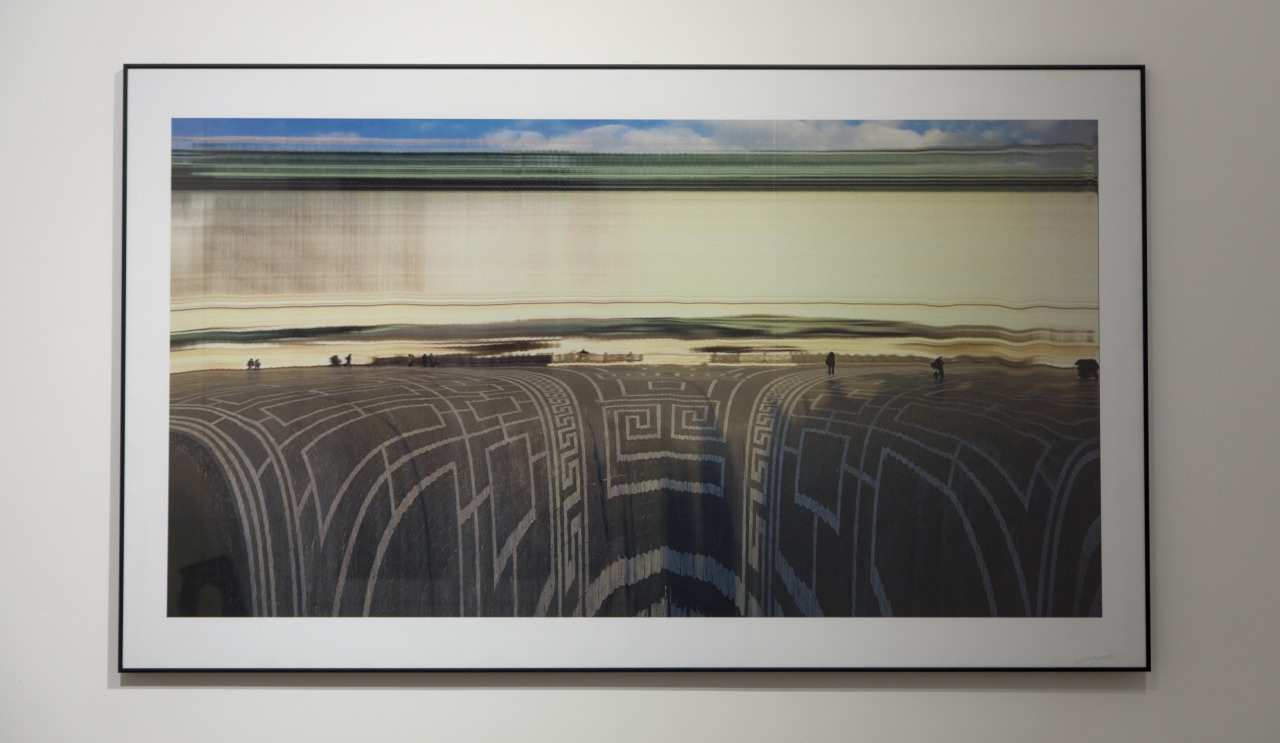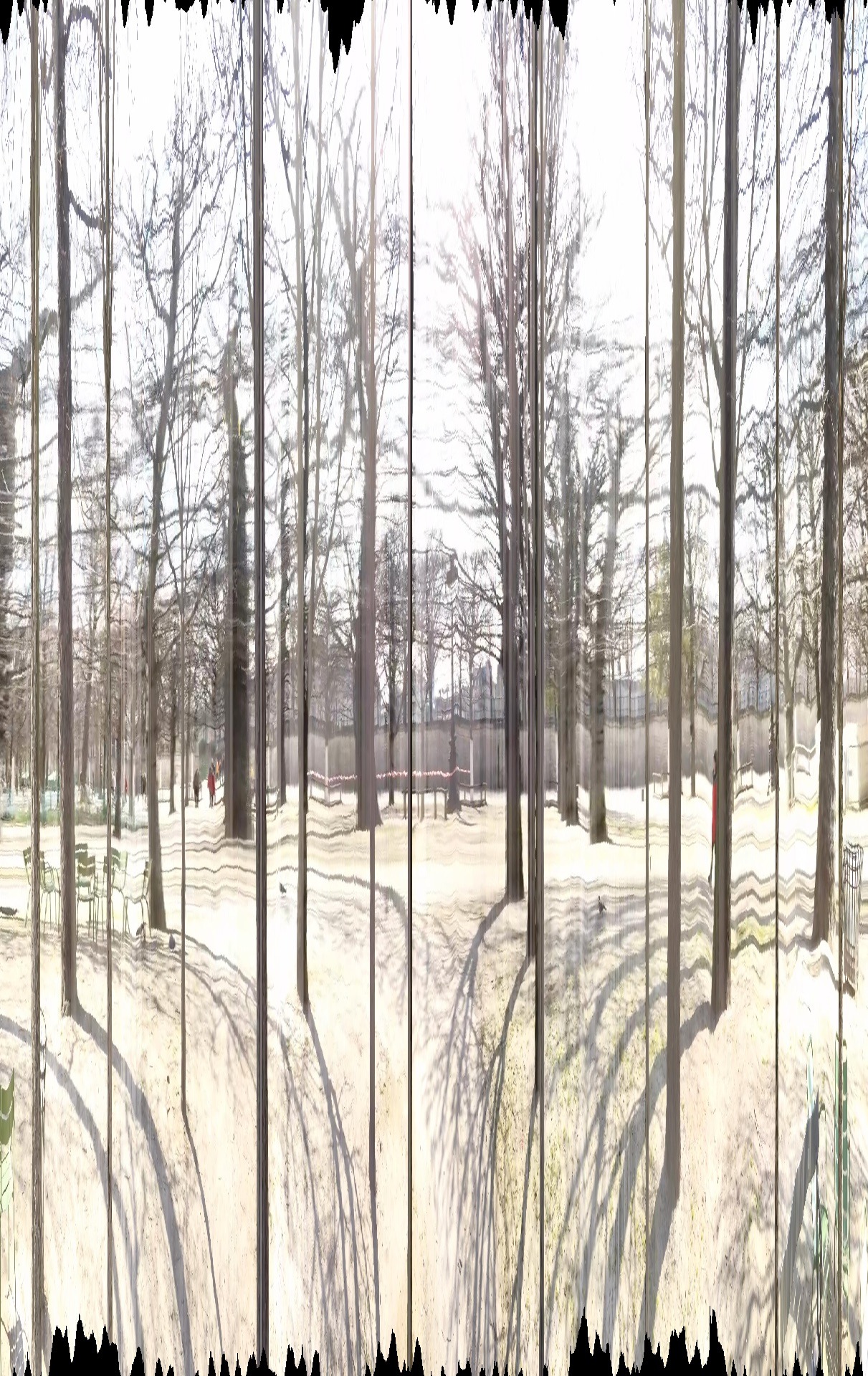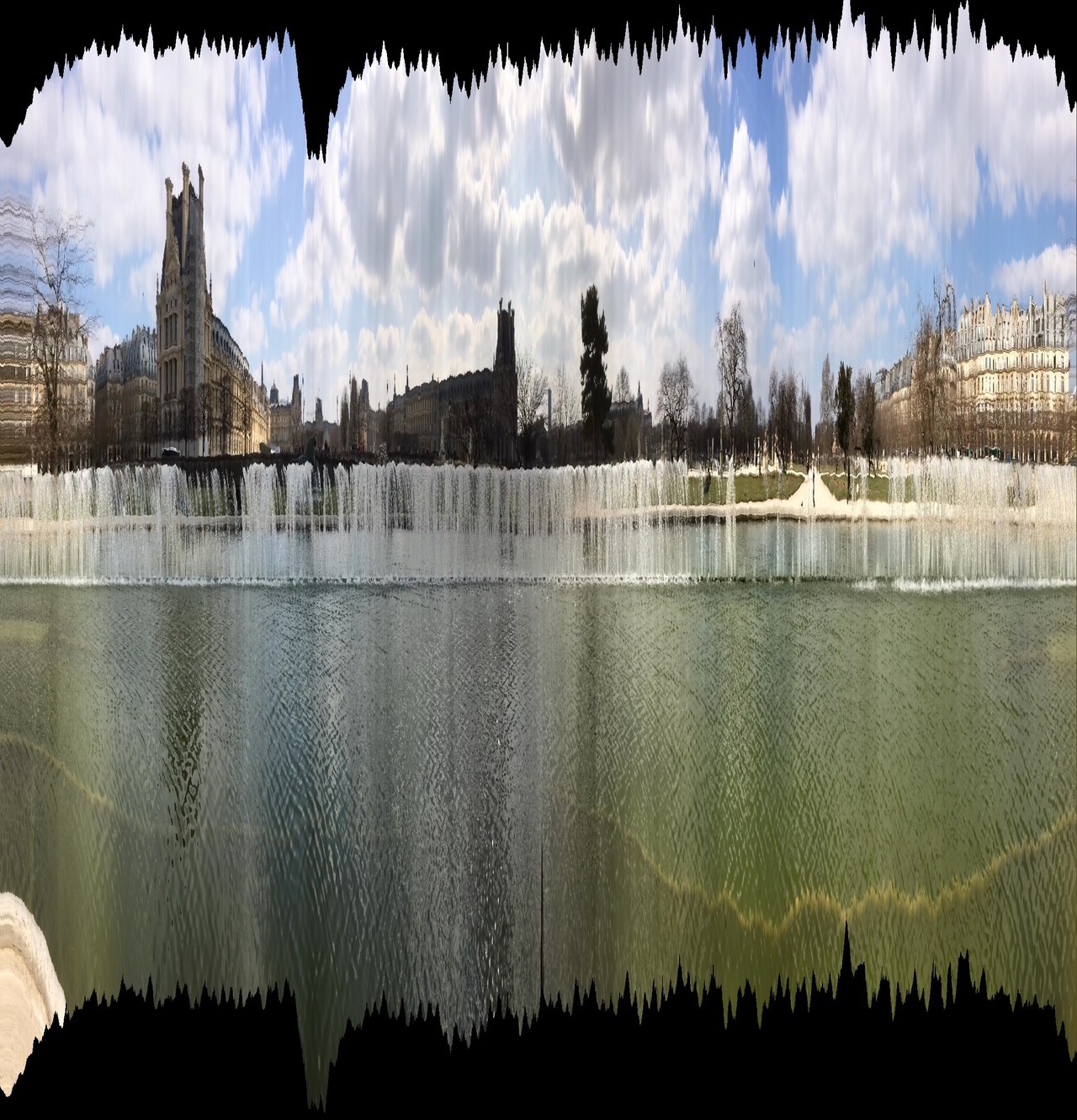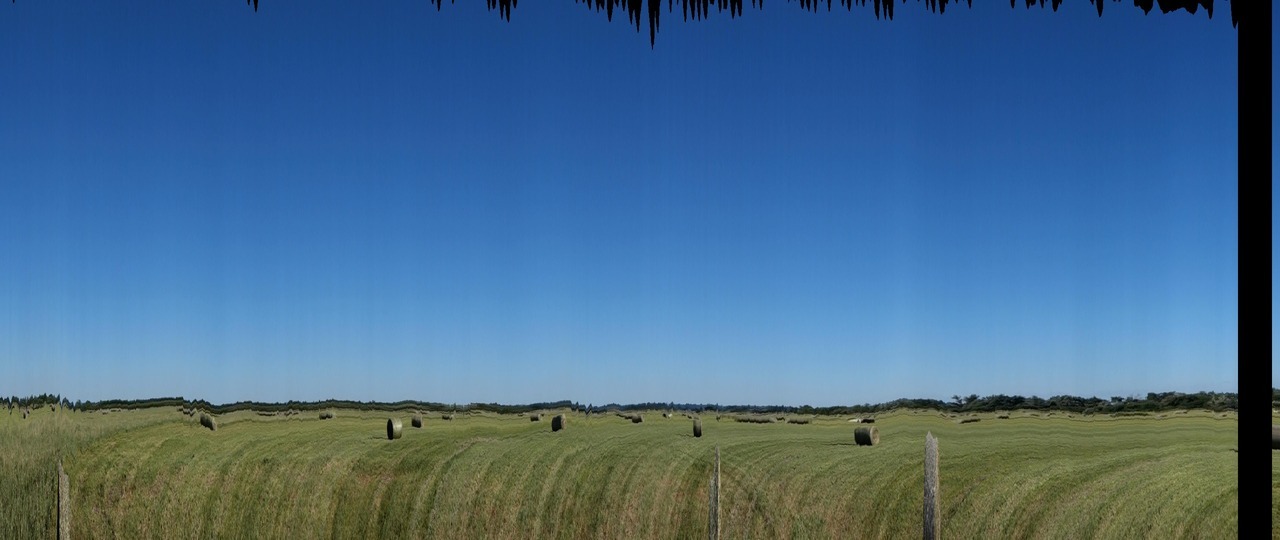Inverse and Perspective
 horizontally inverse perspective of Heroes square in Budapest
horizontally inverse perspective of Heroes square in Budapest
Giclée print, 174 x 120 cm
2012, 2017
A budapesti Hősök tere olyan vetületen ábrázolva, ami egyszerre használja a perspektíva és a fordított perspektíva szabályrendszerét is. (fotomontázs, 2012)
The Heroes’ Square in Budapest is depicted in a projection that uses both perspective and the inverted perspective rules. (photo montage 2012)
A fordított perspektíva sorozatban az a kérdés foglalkoztatott, hogy vajon milyen hatással van a perspektivikus látás a gondolkodásunkra. Lehetséges-e a perspektívára, mint ad-hoc képábrázolási technikára tekinteni. Ezért kísérleteztem fordított perspektivikus és más alternatív vetületek ábrázolásával.
A vetület általános definícióját úgy határoztam meg, hogy adott egy tetszőleges térbeli felület és a felületre merőlegesen érkező fénysugarak alkotják a képet. A perspektíva esetében ez egy apró gömbfelület ahol a kép kívülről érkezik, pont mint Csörgő Attila Fél-tér címűmunkájában (Csörgő, 2002). A fordított perspektívánál értelemszerűen épp fordítva van: a gömb belsejében lévő tárgyakról alkot képet. Egy fordított perspektivikus kép esetében a “fényképezőgép”-nek körbe kéne ölelni a tárgyát.
A fordított perspektíva önmagában felvet rengeteg filozófiai és teológia kérdést is. Míg a perspektivikus képet elsősorban a szubjektum határozza meg, addig a fordított perspektívát a tárgya. Ezért a fordított perspektíva valamiféle objektív kép lehetőségével kecsegtet. A fotósorozatban a két perspektíva kombinációját alkalmaztam, ami vízszintesen a fordított, függőlegesen a megszokott perspektíva szabályait követi. Ennek a vetületi formája egy fánk belső oldala.
Az egyik legizgalmasabb gondolat kísérletet Pascal gömbjét használni képalkotó felületként. Pascal gömbje paradox geometria. Borghes a következő képpen jellemzi: A természet “egy végtelen gömb, amelynek a középpontja mindenütt van, a kerülete sehol.” (Borghes 1951)
In the Reverse Perspective series, I was intrested in how perspective projection or other projections relates to the way we think. It’s possible to view perspective as an ad-hoc image representation technique. Therefore, I experimented with depicting inverse perspective and other alternative projections.
The general definition of the projection was defined as a given spatial surface and the light rays coming perpendicular to the surface form the image. In the case of perspective, this is a small spherical surface where the image comes from the outside, just like in Attila Csörgő’s work entitled Fél-tér (Csörgő, 2002). In the inverted perspective, it is, by definition, just the opposite: it forms an image of the objects inside the sphere. In the case of an inverted perspective image, the “camera” should embrace its subject.
The reverse perspective alone also raises a plethora of philosophical and theological issues. While the perspective image is primarily determined by the subject, the inverted perspective is its subject. Therefore, the inverted perspective promises the possibility of some kind of objective image. In the series of photos, I used a combination of the two perspectives, which follows the rules of the inverted perspective horizontally and the usual perspective vertically. The projection form of this is the inside of a donut.
One of the most exciting ideas is an attempt to use Pascal’s sphere as an imaging surface. Pascal’s sphere of paradoxical geometry. Borghes describes it as follows: Nature is “an infinite sphere with its center everywhere, its perimeter nowhere.” (Borghes 1951)
 A fától látszik az erdő
Perspective studies II. - Seeing the wood for the trees, 2016
A fától látszik az erdő
Perspective studies II. - Seeing the wood for the trees, 2016
 Perspective studies II. - Fountain, 2016
Perspective studies II. - Fountain, 2016
 Perspective studies II. - Bales 2016
Perspective studies II. - Bales 2016